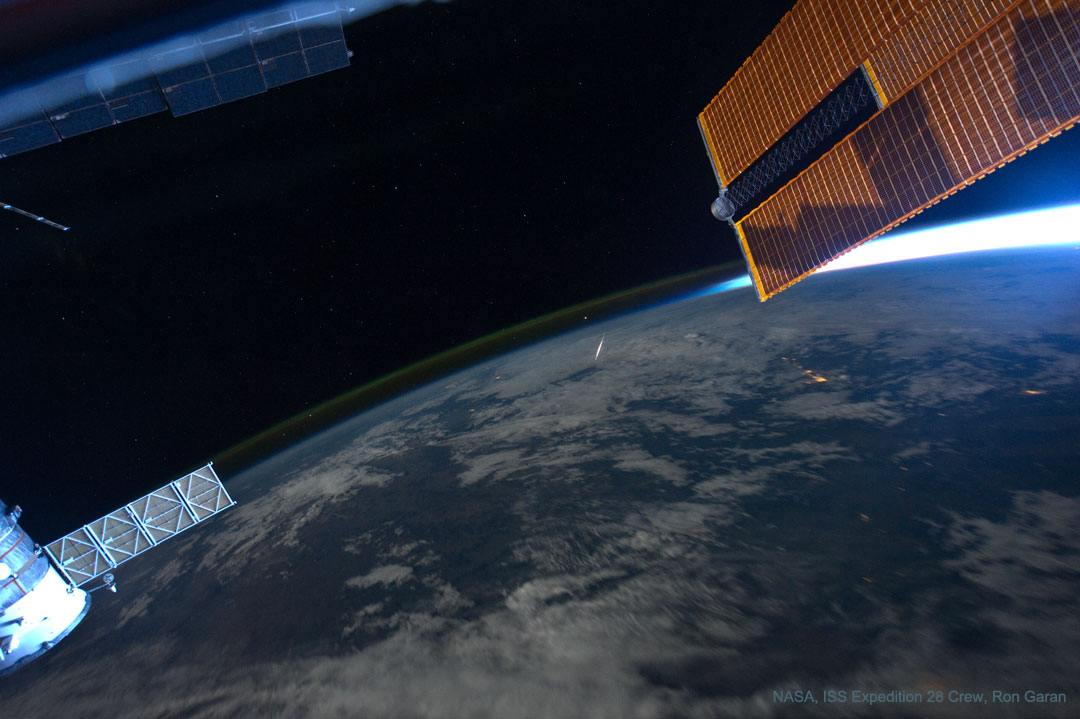2021年8月8日
A Perseid Below
Image Credit: NASA ISS Expedition 28 Crew, Ron Garan
Explanation: Earthlings typically watch meteor showers by looking up. But this remarkable view, captured on August 13, 2011 by astronaut Ron Garan, caught a Perseid meteor by looking down. From Garan’s perspective onboard the International Space Station orbiting at an altitude of about 380 kilometers, the Perseid meteors streak below, swept up dust left from comet Swift-Tuttle heated to incandescence. The glowing comet dust grains are traveling at about 60 kilometers per second through the denser atmosphere around 100 kilometers above Earth’s surface. In this case, the foreshortened meteor flash is right of frame center, below the curving limb of the Earth and a layer of greenish airglow, just below bright star Arcturus. Want to look up at a meteor shower? You’re in luck, as the 2021 Perseids meteor shower peaks this week. This year, even relatively faint meteors should be visible through clear skies from a dark location as the bright Moon will mostly absent.
Notable Perseids Submissions to APOD: 2018, 2019, 2020
Tomorrow’s picture: perseids from perseus
俯看英仙座流星
影像提供: NASA ISS Expedition 28 Crew, Ron Garan
说明: 地球住民通常得抬头看流星雨,不过在这幅摄于2011年8月13日的精采影像里,太空人伽朗得俯视才能捕捉到这颗流星。从伽朗在380公里高国际太空站(ISS)的视角,史威福-塔托彗星留下的尘埃从下方掠过,并被加热到发出白炽的辉光。这些明亮的彗星尘埃,以大约每秒60公里的高速,穿过离地表约100公里高处的大气层。在此例中,因视角而缩短的流星亮闪,位在影像中央偏右处,在弯曲的地球临边和泛绿气辉层之下,紧贴在明亮的大角星下方。想仰望今年的英仙座流星雨呢?你运气很好,2021年的英仙座流星雨极大期就在这星期。今年因几乎无明月的干扰,所以从有幽暗清朗天空的地点看出去,就连相对昏暗的流星应都清楚可辨。
值得注意的提交给APOD的英仙座流星雨影像: 2018年、2019年、2020年
明日的图片: perseids from perseus




我没有一次看到过流星雨
我也是